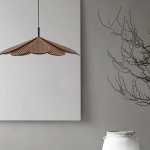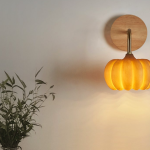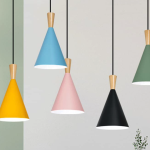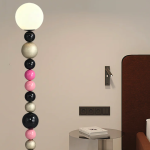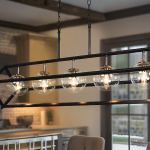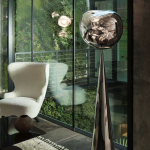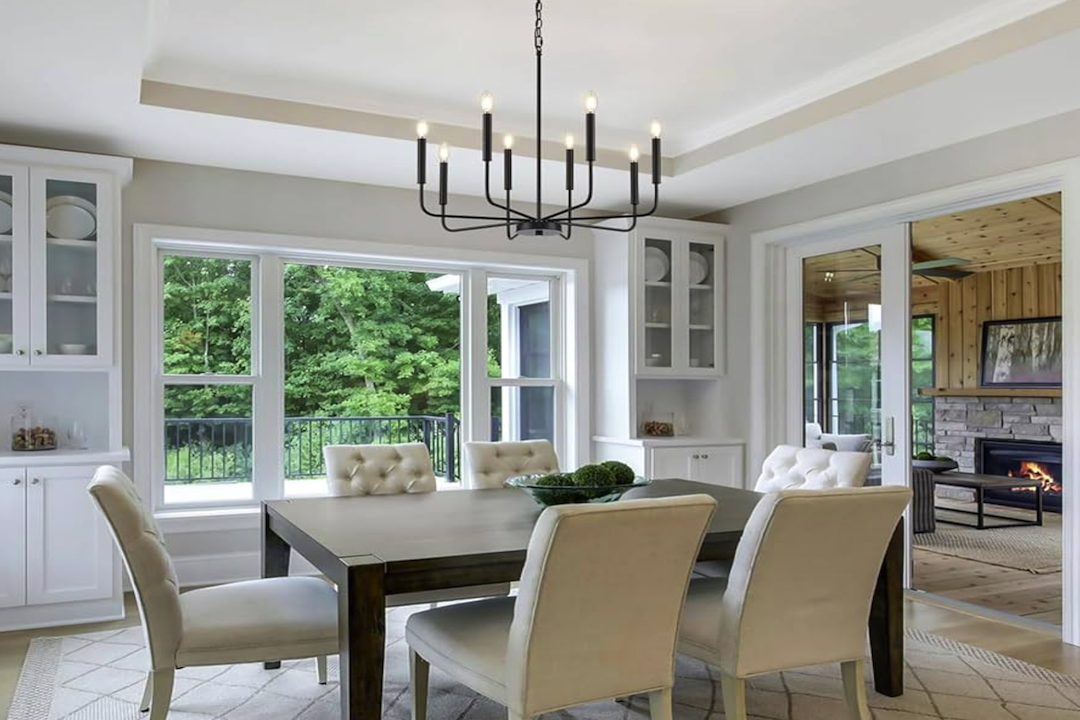Metal chandeliers have long been a symbol of elegance and sophistication in interior design. These stunning fixtures, often crafted from materials such as brass, wrought iron, or stainless steel, serve not only as sources of illumination but also as striking focal points that can elevate the aesthetic of any room. The versatility of metal chandeliers allows them to seamlessly blend into various design styles, from traditional to contemporary, making them a popular choice for dining rooms, living spaces, and entryways alike.
Their intricate designs and the play of light they create can transform an ordinary space into an extraordinary one. The allure of metal chandeliers lies in their ability to combine functionality with artistry. They can range from ornate, vintage-inspired designs featuring elaborate scrollwork to sleek, minimalist structures that embody modern sensibilities.
This diversity means that homeowners can find a chandelier Lamolighting that resonates with their personal style while also complementing the overall decor of their home. As we delve deeper into the world of metal chandeliers, we will explore how to choose the right size and style for your dining room, tips for installation and maintenance, and ways to enhance the ambiance with appropriate lighting.
Choosing the Right Size and Style for Your Dining Room
Selecting the right size and style of a metal chandelier for your dining room is crucial to achieving a harmonious balance within the space. A chandelier that is too large can overwhelm the room, while one that is too small may fail to make an impact. To determine the appropriate size, a common guideline is to add the dimensions of the room (in feet) together and convert that number into inches.
For example, a dining room measuring 12 feet by 15 feet would require a chandelier approximately 27 inches in diameter. This formula provides a solid starting point, but personal preference and the specific layout of your dining area should also be considered. In terms of style, it is essential to consider the existing decor and architectural elements of your dining room.
If your space features traditional furnishings with rich wood tones and classic patterns, a wrought iron chandelier with intricate detailing may be the perfect fit. Conversely, if your dining room leans towards a more modern aesthetic with clean lines and neutral colors, a sleek metal chandelier with geometric shapes could enhance the contemporary vibe. Additionally, consider the finish of the metal; polished brass can add warmth and richness, while matte black or brushed nickel can introduce a more industrial or minimalist feel.
Tips for Proper Installation and Maintenance
Proper installation of a metal chandelier is vital not only for safety but also for ensuring that it functions effectively as a lighting source. Before installation, it is essential to turn off the power at the circuit breaker to avoid any electrical hazards. If you are not comfortable working with electrical wiring, it is advisable to hire a licensed electrician who can ensure that the chandelier is securely mounted and wired correctly.
The height at which the chandelier hangs is also important; typically, it should be positioned about 30 to 36 inches above the dining table to provide adequate illumination without obstructing views. Once installed, maintaining your metal chandelier is key to preserving its beauty and functionality. Regular dusting with a soft cloth can prevent the buildup of grime and keep the fixture looking its best.
For more thorough cleaning, especially if the chandelier has intricate details or crystals, it may be necessary to use a gentle cleaning solution and a soft brush to reach all areas. Additionally, checking the bulbs periodically ensures that they are functioning correctly; replacing burnt-out bulbs promptly will maintain the desired ambiance in your dining room.
Enhancing Ambiance with the Right Lighting
The type of lighting used in conjunction with a metal chandelier can significantly influence the overall ambiance of your dining room. While chandeliers are often equipped with incandescent or LED bulbs, considering the color temperature of these bulbs is essential for creating the desired atmosphere. Warm white bulbs (around 2700K) emit a soft glow that fosters an inviting and cozy environment, ideal for family dinners or entertaining guests.
In contrast, cooler white bulbs (above 3000K) can create a more energetic atmosphere, which may be suitable for casual gatherings or brunches. Layering lighting is another effective strategy for enhancing ambiance. In addition to the chandelier, incorporating other light sources such as wall sconces or table lamps can create depth and dimension within the space.
Dimmers are also an excellent addition; they allow you to adjust the brightness according to the occasion, whether it’s an intimate dinner or a festive celebration. By thoughtfully combining different lighting elements, you can craft an inviting atmosphere that encourages conversation and connection around the dining table.
Incorporating a Metal Chandelier into Your Dining Room Decor
Integrating a metal chandelier into your dining room decor involves more than just hanging it from the ceiling; it requires thoughtful consideration of how it interacts with other design elements in the space. One effective approach is to use the chandelier as a starting point for your color palette. For instance, if you choose a brass chandelier, consider incorporating gold accents in your table settings or artwork to create cohesion throughout the room.
This not only ties the design together but also enhances the visual impact of the chandelier itself. Another way to incorporate a metal chandelier into your decor is by considering its scale in relation to other furnishings. A large chandelier can serve as a dramatic centerpiece above a long dining table, while smaller fixtures may work better in more intimate settings or in conjunction with other decorative elements.
Additionally, consider how the chandelier complements other materials in the room; pairing metal with natural elements like wood or stone can create an appealing contrast that adds warmth and texture to your dining area.
Mixing and Matching Metal Finishes for a Modern Look
In contemporary interior design, mixing and matching metal finishes has become increasingly popular as a way to create visual interest and depth within a space. When incorporating a metal chandelier into your dining room, consider how it interacts with other metallic elements in the room—such as cabinet hardware, light fixtures, or decorative accessories. For example, pairing a polished nickel chandelier with matte black accents can create a striking contrast that feels both modern and sophisticated.
To successfully mix metal finishes, it’s essential to establish a unifying theme or color palette that ties everything together. This could involve selecting metals that share similar undertones; for instance, warm metals like brass and gold can complement each other beautifully when used thoughtfully throughout the space. Alternatively, cool metals like chrome and stainless steel can create a sleek and cohesive look when combined strategically.
By embracing this trend of mixing finishes, you can achieve a dynamic and layered aesthetic that reflects your personal style while keeping your dining room feeling fresh and contemporary.
Creating a Focal Point with a Statement Chandelier
A statement chandelier serves as an eye-catching focal point in any dining room, drawing attention and setting the tone for the entire space. When selecting a statement piece, consider its size, shape, and design elements that will make it stand out against other decor. A large, sculptural chandelier with unique features—such as cascading crystals or bold geometric shapes—can become an instant conversation starter while adding drama to your dining area.
To enhance the impact of your statement chandelier further, consider how it interacts with other design elements in the room. For instance, if you have an open-concept layout where the dining area flows into adjacent spaces, ensure that your chandelier complements other fixtures without competing for attention. Additionally, using complementary colors or textures in your table settings or wall art can help frame the chandelier as a central feature while maintaining balance throughout the room.
Budget-Friendly Options for Adding Elegance to Your Dining Room
While high-end metal chandeliers can be stunning investments, there are numerous budget-friendly options available that can still add elegance to your dining room without breaking the bank. Many retailers offer stylish alternatives made from less expensive materials that mimic the look of metal chandeliers at a fraction of the cost. For example, resin or painted wood chandeliers can provide similar aesthetics while being more affordable.
Another cost-effective approach is to explore second-hand shops or online marketplaces where vintage or gently used chandeliers can often be found at reduced prices. With some creativity and DIY skills, these pieces can be refurbished or updated with new finishes or light bulbs to fit modern tastes. By being resourceful and open-minded about sourcing options, you can find beautiful lighting solutions that enhance your dining room’s elegance without straining your budget.



